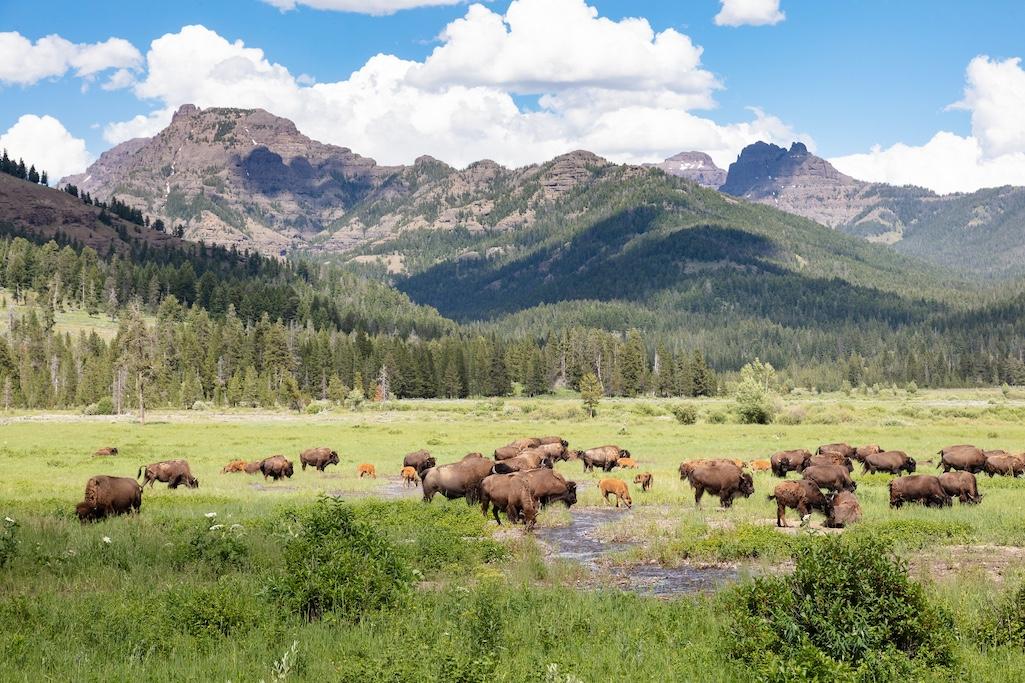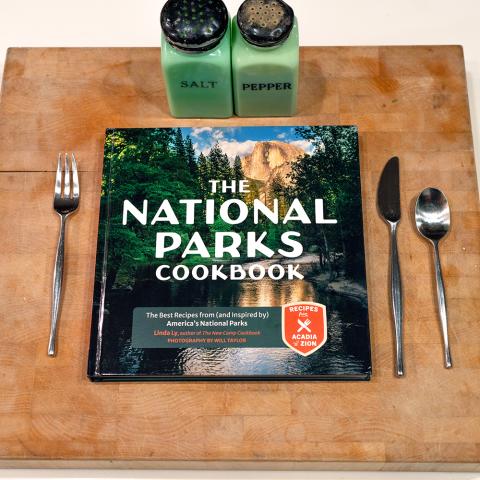
Bison in Round Prairie near the Pebble Creek Campground/NPS file, Jacob W. Frank
The National Park Service has approved Yellowstone National Park’s plan for managing bison in the park, one that calls for an annual population ranging from 3,500-6,000 animals.
The plan calls for the park to continue to transfer bison to tribal lands via the Bison Conservation Transfer Program, and continue to allow both a "tribal treaty harvest" and public hunting outside the park to regulate numbers.
"We have come a very long way since the last bison management plan was signed in 2000," Yellowstone Superintendent Cam Sholly said in a prepared statement. "This new plan solidifies much of the progress made over the past two decades and provides a foundation for future decision making. We appreciate the significant engagement on this plan by our affiliated Tribes, partners, and the general public."
Managing Yellowstone bison long has been a controversial issue due to concerns they could spread brucellosis to cattle herds in Montana. That concern led to adoption of the Interagency Bison Management Plan in 2000 after Montana sued the federal government in 1995 over fears bison were spreading brucellosis to cattle. However, research conducted in 2016 concluded that elk, not bison, infected cattle herds in Montana and, overall, posed a greater threat than bison to spreading the disease in the region. Nevertheless, Montana takes a much harsher view of bison entering the state than it does elk.
The challenges in managing the park’s bison reflect the various agencies involved. Once bison leave the park, they no longer are under Park Service jurisdiction but fall either under state control or the U.S. Forest Service if on national forest lands. Additionally, several tribes have treaty rights to hunt bison that leave Yellowstone and head onto the Custer Gallatin National Forest.
Private landowners also come into play when bison move onto their properties, while non-governmental organizations that want to preserve Yellowstone bison also voice their concerns.
According to a Yellowstone release, the Park Service “will continue to support a bison population range that has allowed the park to successfully maintain spatial and temporal separation between bison and cattle outside the park, resulting in zero brucellosis transmissions over the last two decades. The population range protects the genetic integrity of the species and the important role bison play in the ecological balance of the park. It also preserves an ecologically sustainable population of wild, migratory bison.
"The decision considers the limited summer and winter habitat outside the park and acknowledges the NPS does not have jurisdiction or control over actions such as hunting or tolerance for bison beyond the park boundary.”
Two pending matters could force the Park Service to revisit its chosen approach. The U.S. Fish and Wildlife has been asked to consider whether there are two genetically distinct bison herds in the park — one in the center of Yellowstone and another on the Northern Range — and to decide whether Yellowstone bison should be designated as a threatened or endangered species under the Endangered Species Act.




 Support Essential Coverage of Essential Places
Support Essential Coverage of Essential Places






